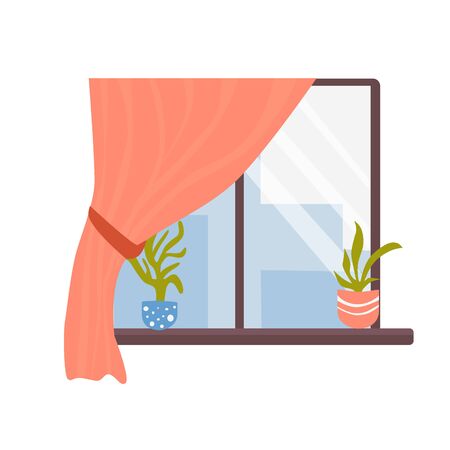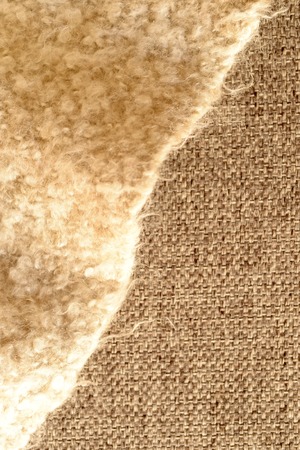Introduction to Texture in British Interiors
Across the UK, home design is more than a visual journey—it’s an immersive experience that invites touch, comfort, and connection. Texture lies at the heart of this approach, playing a quiet yet powerful role in shaping spaces that feel truly lived-in and loved. From the soft embrace of a knitted throw draped over a Chesterfield sofa to the sturdy warmth of exposed brickwork in a converted London flat, tactile elements have long been woven into the fabric of British interiors. This sensory layering goes beyond aesthetics; it anchors us, soothes us, and helps define what it means to feel ‘at home.’ As we explore the science behind texture, we’ll discover how these carefully chosen surfaces and materials not only enhance our daily routines but also contribute to our overall sense of wellbeing within the unique context of UK homes.
2. The Psychology of Texture and Wellbeing
Texture is more than a visual delight—its a tactile experience that directly influences our emotional state, especially within the sanctuary of our homes. Recent scientific studies have uncovered fascinating connections between touch, texture, and overall wellbeing. As UK homeowners increasingly seek interiors that foster comfort and relaxation, understanding these psychological links becomes ever more relevant.
The Science Behind Touch and Emotional Response
The sense of touch is processed in the brain’s somatosensory cortex, but it also activates areas associated with emotion, such as the insula and amygdala. When we encounter different textures—whether its the softness of a woollen throw or the coolness of stone flooring—these physical sensations can evoke feelings ranging from calm to invigoration. British research has shown that tactile stimuli can decrease levels of cortisol, the stress hormone, thereby promoting relaxation and a sense of security at home.
Research Findings on Texture in Residential Spaces
| Texture Type | Emotional Effect | Example in UK Homes |
|---|---|---|
| Soft (e.g., velvet, wool) | Comforting, calming | Cushions on Chesterfield sofas, woollen rugs |
| Natural (e.g., wood grain, linen) | Grounding, restorative | Oak flooring, linen curtains |
| Smooth (e.g., polished surfaces) | Invigorating, clean | Ceramic kitchen tiles, marble worktops |
| Rough (e.g., exposed brick) | Stimulating, textural interest | Feature brick walls in Victorian terraces |
Tactile Design for Modern British Living
In the context of UK homes—often defined by their unique architectural heritage and evolving design trends—the integration of varied textures becomes a crucial tool for enhancing emotional wellbeing. Incorporating tactile elements not only personalises a space but also serves to create environments that nurture mental health. By understanding the psychological impact of touch and texture, homeowners can make informed choices that elevate both comfort and aesthetic harmony within their living spaces.

3. Classic and Contemporary Tactile Materials in UK Homes
British interiors have long been celebrated for their rich tapestry of tactile materials, weaving together heritage and innovation to create spaces that both comfort and invigorate. From the classic embrace of natural wool to the contemporary allure of exposed brick, each material not only defines a visual aesthetic but also crafts a unique sensory landscape within the home.
Wool: Timeless Warmth and Comfort
Wool has been a staple in British homes for centuries, prized for its natural warmth, resilience, and quintessentially cosy feel. Whether layered as soft throws over an armchair or used in traditional tartan carpets, wool offers a gentle texture underfoot and invites relaxation—a perfect antidote to the UK’s often brisk climate. Its tactile softness is scientifically linked to feelings of safety and calm, making it an enduring choice in both rural cottages and urban flats.
Velvet: Opulent Touch with Modern Appeal
Once reserved for stately homes and regal settings, velvet has found new life in contemporary British interiors. Its sumptuous pile catches the light and hand alike, providing a sense of luxury while remaining invitingly tactile. Velvet upholstery on sofas or cushions delivers a sensory depth—its plushness soothing stress and adding a touch of playful indulgence to both classic Victorian terraces and minimalist lofts.
Exposed Brick: Urban Heritage Meets Sensory Interest
With the rise of industrial-style conversions across London, Manchester, and beyond, exposed brick walls have become synonymous with modern British style. The rough-hewn texture of aged brick introduces visual intrigue as well as tactile contrast—cool to the touch yet visually warming. This material grounds interiors with a sense of history and permanence, while its uneven surface encourages mindful interaction and breaks up otherwise sleek, modern finishes.
Blending Old and New for Wellbeing
The synergy between classic and contemporary materials in UK homes allows for dynamic textural layering. By combining the familiar comfort of wool with the chic softness of velvet or the ruggedness of brick, homeowners can curate environments that nurture wellbeing through diverse sensory experiences. This thoughtful interplay not only enhances daily living but also pays homage to Britain’s evolving design narrative—where tradition meets innovation through touch.
4. Textures that Transform: Case Studies from Across the UK
Across the United Kingdom, homeowners and designers are increasingly recognising how tactile elements can dramatically elevate not only the aesthetic of a space but also its atmosphere and emotional resonance. Let’s explore real-life case studies that showcase how carefully curated textures have enriched homes from London townhouses to Scottish cottages, enhancing comfort and wellbeing in everyday life.
London Flat: Layered Luxury in a Compact Space
In a bustling Hackney flat, a young couple sought to soften the industrial edge of their open-plan living area. By introducing velvet cushions, boucle throws, and a thick wool rug atop polished concrete floors, they created inviting zones for relaxation. The textural contrasts brought warmth and dimension without cluttering the space—proving that even compact city dwellings can become sanctuaries through mindful layering.
Cotswolds Cottage: Rustic Charm Meets Modern Comfort
A period cottage in the Cotswolds underwent a sensitive renovation where natural textures took centre stage. Exposed stone walls were complemented by linen drapes and oak beams, while handwoven baskets and sheepskin rugs offered tactile delight underfoot. The interplay of rough and soft surfaces fostered a sense of grounding and tranquillity, ideal for unwinding after countryside walks.
Comparative Table: Before & After Texture Interventions
| Location | Before | After (Texture Intervention) | Impact on Wellbeing |
|---|---|---|---|
| Edinburgh Tenement | Bare wooden floors, minimal soft furnishings | Addition of tartan wool runners, velvet curtains | Reduced echo, cosier ambience, enhanced sense of heritage |
| Brighton Seaside Home | Sleek modern finishes, neutral palette | Woven jute mats, rattan accent chairs, tactile ceramics | Inviting touchpoints, coastal calm, increased user engagement with space |
| Birmingham Semi-Detached | Standard painted walls, sparse textiles | Feature wall in textured wallpaper, plush upholstery upgrades | Livelier mood, improved comfort for family gatherings |
The Takeaway: Texture as Everyday Therapy
These case studies illustrate how texture goes beyond decoration—it’s a subtle yet powerful tool for nurturing mental health at home. By drawing inspiration from both local materials and personal stories, UK homeowners are discovering that thoughtful layers of touchable surfaces can transform ordinary rooms into extraordinary retreats.
5. Balancing Comfort and Aesthetics: Practical Tips for Homeowners
Layering Tactile Elements with British Flair
Achieving the perfect balance between comfort and aesthetics in your home is an art, particularly when considering how tactile elements influence wellbeing. In the UK, where heritage and modernity often blend seamlessly, layering textures provides an opportunity to create inviting spaces that reflect both personality and tradition. Here are actionable tips to ensure your interiors are as pleasing to touch as they are to the eye.
Start with a Neutral Canvas
British homes often favour understated elegance—think muted palettes inspired by natural landscapes. Begin with neutral walls or flooring in soft tones such as dove grey, creamy white, or gentle taupe. This creates a serene backdrop that allows tactile layers to shine without overwhelming the senses.
Add Depth with Textiles
Introduce depth and cosiness using classic British textiles. A woollen throw draped over a Chesterfield sofa or velvet cushions on an armchair add both warmth and visual interest. Mix materials—linen for breathability, tweed for heritage charm, and plush cotton for everyday comfort. Don’t be afraid to play with subtle patterns like herringbone or tartan, which evoke British sensibilities while providing tactile intrigue.
Incorporate Natural Materials
Materials sourced from nature ground a space and appeal to our innate desire for connection with the outdoors—a concept at the heart of many British interiors. Consider wooden flooring with visible grain, stone countertops in kitchens, or woven rattan baskets for storage. These elements not only offer textural diversity but also contribute to a sense of calm and continuity with the surrounding environment.
Create Sensory Zones
Think about how each room is used and layer textures accordingly. In living rooms, combine soft rugs underfoot with smooth ceramic accessories on shelves. Bedrooms benefit from crisp cotton bedding complemented by chunky knit throws. Even bathrooms can embrace texture through fluffy towels and matte-finish ceramics. By zoning textures, you encourage movement through different sensory experiences, enhancing overall wellbeing.
Consider Seasonal Swaps
The British climate invites seasonal change. Swap lightweight linens for heavier wools in autumn and winter; refresh with airy fabrics during spring and summer. This not only keeps your space feeling current but also responds intuitively to your family’s comfort needs throughout the year.
Stay True to Your Style
Ultimately, successful layering is about personal expression as much as it is about tactile pleasure. Choose textures that resonate with your own style—be it contemporary minimalism or countryside cosiness—while ensuring each addition enhances harmony rather than causing clutter. With careful curation and a nod to timeless British design principles, your home can become a sanctuary where every surface invites touch and every detail contributes to wellbeing.
6. Future Trends in Texture for UK Living Spaces
As the science of texture continues to captivate interior designers and homeowners alike, the future of tactile elements in UK homes is evolving towards a blend of innovation, sustainability, and sensory richness. Looking ahead, we can expect several key developments to shape domestic interiors across Britain.
Sustainable Textures: Eco-Conscious Materials
With the UKs growing commitment to sustainability, future trends point towards responsibly sourced and recycled materials that offer both tactile intrigue and environmental reassurance. Expect to see more British-made wool, repurposed wood, and organic fibres such as hemp or jute woven into upholstery and soft furnishings. These textures not only delight the senses but also support eco-friendly living—a value increasingly important in British households.
Technological Innovations: Smart Surfaces
Emerging technologies are set to revolutionise how we interact with our homes. Smart textiles—fabrics embedded with sensors or responsive coatings—will allow surfaces to adapt their feel according to touch or temperature. Imagine sofas that adjust firmness based on your body heat, or curtains that change their texture to diffuse light differently throughout the day. Such innovations promise a multisensory, dynamic environment tailored to individual comfort.
Biophilic Tactility: Bringing Nature Indoors
The biophilic design movement will continue influencing UK interiors, with natural textures like rattan, stone, and untreated timber gaining prominence. These elements offer a tactile connection to nature, believed to reduce stress and foster wellbeing—a priority for modern British families seeking sanctuary at home. Textured wall panels mimicking bark or moss may soon become a staple in calming living spaces from Cornwall to the Highlands.
Customisation & Personal Expression
Personalised textures will be at the forefront of interior trends, with modular rugs, interchangeable cushion covers, and bespoke textured wallpapers allowing homeowners to curate unique sensory experiences. This shift empowers individuals to reflect personal narratives within their spaces, celebrating diversity in taste and touch across the UK’s regions.
Heritage Meets Contemporary Design
Finally, there is a resurgence of heritage crafts—think Harris Tweed cushions or hand-thrown ceramic tiles—blending seamlessly with contemporary tactile innovations. By honouring local craftsmanship while embracing cutting-edge materials, UK homes are poised to achieve a harmonious balance between tradition and modernity through texture.
As these trends unfold, one thing is clear: texture will remain at the heart of British interior design, shaping not just how our homes look but how they make us feel—inviting touch, sparking joy, and nurturing wellbeing for years to come.


